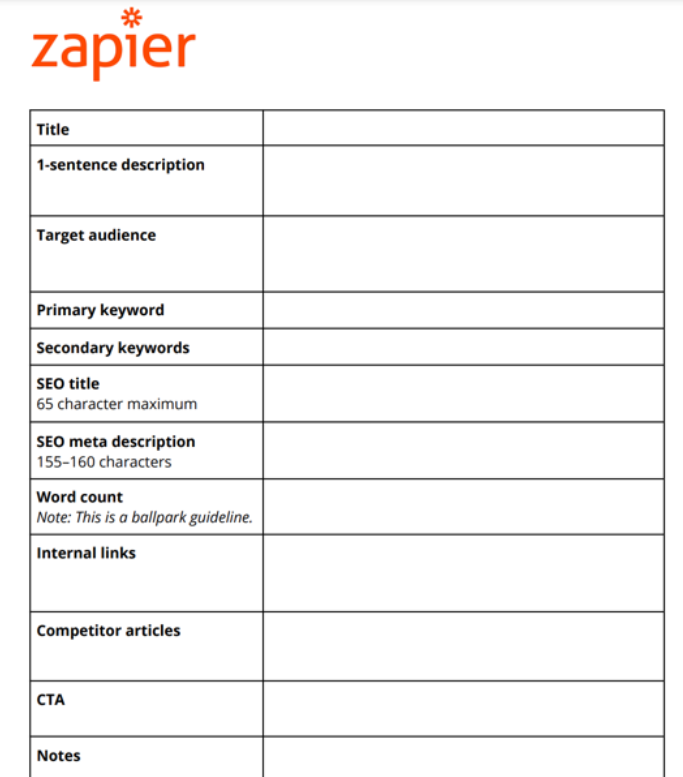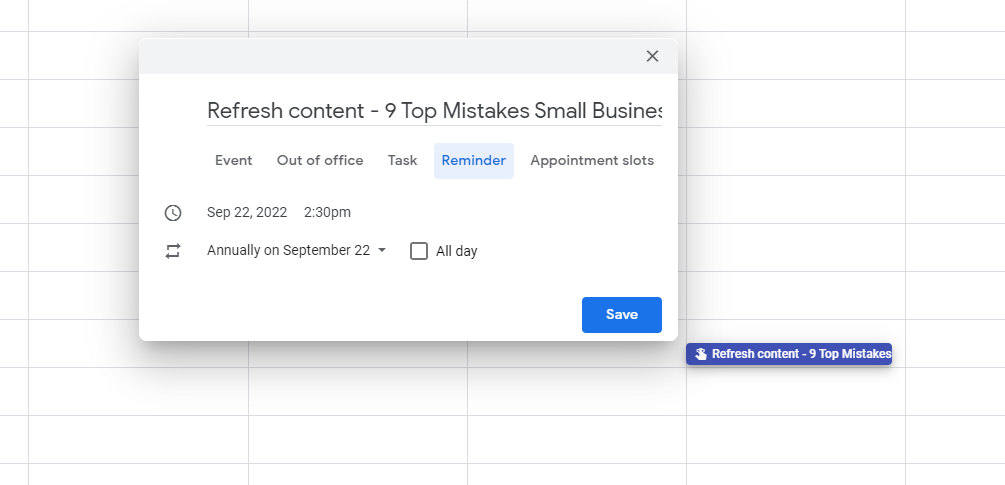Learning how to develop a content management strategy will help you stay afloat when you might otherwise feel like you’re drowning in a sea of content. Digital content publishing is a fast-paced world and sometimes content creation can move so quickly that failing to set up a functioning content management system could mean the downfall of your editorial calendar.
I’ve worked as a copywriter and digital marketer for over a decade. Managing one site or even two sites can be a lot of work, however, when I started working on a larger number of sites, it was a whole different ball game.
Working on the content management strategy of over a hundred and fifty sites is much different. It means you have to know your workflow, your content team, where a piece of content begins and ends, and how it gets there.
In this article, I’ll talk with you more about maintaining great content that is of high quality by having effective content management strategies in place. You’ll learn how to manage your digital asset portfolio without sacrificing quality content in the pursuit of higher output.
What Is A Content Management Strategy?
When I talk about a content management strategy, I mean a strategic approach to your digital assets for online publishing. It’s a focus on ensuring you know where your content is every step of the way through the digital publishing process.
What Is Content Management?
Content management is more related to content governance. This is how you’d determine who handles what with the content, the processes behind the creation of your content, and how you maintain the content.
Keep in mind that the content management and content management strategy I talk about in this article aren’t related to content management software like Drupal or WordPress.
You’ll see in the next section how content management and content strategy are different.
What Is Content Strategy?
Content strategy means figuring out how you can put a piece of content to work for you. You won’t think about where your content lives and how to keep it updated when you think about content strategy. That’s all in the content management part of things.
It also means figuring out how the content plays into your overall content marketing efforts, your ideal audience’s customer journey, and how it can serve your customers and potential customers.
There are many pieces of content you can create but if they don’t play a part in your overall content strategy, they may be a fluff piece and have questionable functionality and necessity in your plan.
Types of content you’ll likely include in your content strategy when creating new content:
- Blogs
- Podcasts
- YouTube content
- Case study
- Success stories
- Testimonials
- Online reviews
- White papers
- Ebooks
- Social media
- GIFs
- Memes
- Webinars
Not all types of content will be applicable to your strategy, but using multiple types of content can help you find the means of communicating that will impact the content consumer the most.
What Does Good Content Look Like?
You might wonder how to determine if the content you create is good and if it will produce the results you want in your business.
When I look at a piece of content, I always want to make sure it easily communicates the message to the target audience. If you use a lot of jargon in your content but the people you target are novices, then this might not be the right type of content.
However, if you’re talking to seasoned veterans in the industry, this will make them feel more comfortable and make your content more enjoyable to consume.
Metrics To Show The Content Is A Hit
Sometimes the only way to see if the content you create is hitting the mark is to put it out there and let the audience tell you.
Here are some key metrics that will help you see if the content is hitting the mark.
- Facebook share count
- Retweets
- Comments
- Mentions
- Time on site
- Click through rate
- Backlinks
Search Engine Optimization
Another thing most content strategies need to focus on is search engine optimization (aka SEO). The above metrics help with how the article ranks in search results, as well as give you signs that the content you created is hitting the mark.
Search engine optimization is simply helping the search engines understand what your content is about and that it would be helpful for the people searching for the particular query you want to rank for.
Keep in mind: as you create web content, or any content online, metadata plays a big part in ranking your content. Ensure that your SEO team inputs your target keywords into the meta description as well as the title tag through HTML or your content management system.
Being a great content strategist, keeping a great content calendar, and keeping high content production standards isn’t enough to get on Google’s good side, so you have to optimize for the search engines while still keeping your buyer personas in mind.
Why You Need A Content Management Strategy
The Content Marketing Institute did its annual Content Management and Strategy Survey and found that more organizations are strategic about their content this year versus last year. This alone is enough reason to focus on strategy. If you aren’t using content as an edge—your competition is.
If you have a small content team right now (or maybe no team at all), you might not think you need a content management strategy. However, it’s best to get your strategy in place before your business grows. It’s easier to scale things up than to try to put an entire system together once you reach a great volume in your business.
In fact, things may change greatly as your business grows, so you might have to morph your strategy into something more sophisticated. Doing that is much easier if you’ve already learned how to create a strategy for a smaller volume of content.
According to Amy Aitman, COO of Venture 4th Media, “Managing content for a large portfolio of sites is not the same as managing content for one site 100 times. As the portfolio grows, there comes a tipping point when it’s key to centralize your content management system, processes, and tech so you can manage each site centrally without bloated content teams and mismatched processes across the portfolio.”
As you can see, there is a lot more to this strategy than simply posting SEO-optimized copy and hoping for the best. Content management strategy allows you to keep everything in order so your content marketing strategy, your site updates, etc.—everything will run smoother for you.
Content Management Strategy Framework
To optimize the way you create content and maintain your content, you need a framework. It’s easy to tell you to create a framework, but I want to make sure you have some concrete ideas that will allow you to navigate away and get started once you’re finished reading.
Understand Your Content Strategy
Before doing anything, it is important that you understand your content strategy. You need to know what type of content you will create, what information you need to have about that content such as the author’s name and any other important information about it, and how it will serve your target audience. Understanding your content strategy will allow you to create the right content for a positive user experience.
Determine How You’ll Track Your Content
There are a lot of ways to track your content but I find it is most helpful when everyone has a visual. This is where Kanban boards come in handy. I personally like to use Trello. It could just be because I’ve used it for years and it’s familiar to me but it was easy to learn and it has color coding, so what’s not to love?
Simple Content Management Strategy
If you’re like me, you like to keep things simple so you can focus on your business goals without distraction from unnecessary processes. You may not need an elaborate content strategy at this point and you can follow this simple example.
1. You’ve put together all the content types you’ll create. Each of these should have a writer’s brief so it is easy for content creators to confidently produce content without constantly second-guessing themselves. Here is a great example from Zapier:

2. Set up your Kanban boards on Trello. There should be a pre-production board, in production board, ready for publishing, and published board, at a minimum.

3. If you need more granular communication, you can develop a color-coding system. For instance, if a content creator has a question before they can move on, they could put a red label on the card they’re using within the Kanban board. This will communicate that production is at a standstill at this part of the process.
4. Set a reminder to refresh stale content. If you know there is a piece of content that isn’t evergreen, make sure to set a reminder so your content team can refresh it as needed. Depending on the amount of content you need to create, you might simply create a Google calendar and set an update reminder for every six months to a year.
Otherwise, you might need more complex systems that you could set up in apps like Notion. The things you’d want to look at when doing a content audit to update your content are whether or not the content is still accurate and if you need to add any updates about the product, service, strategy, etc. in question.

Keeping things as simple as possible until you need to get more complex can keep you from boiling over from frustration. As you see how the content management strategy works for you, you can tweak it and make it your own so you can get more done, keep your content fresh and appealing to your readers, and add more value to your organization.
Wrapping Up Your Content Management Strategy
Now you’ve got more of an idea about how to put together a content management strategy. There’s no reason you couldn’t run off now and get started. Before you do that, drop a comment below and let me know what your biggest takeaway was and how you’ll implement what you learned in your organization.
You can’t miss out on the newsletter here either. It’s pure gold, so subscribe and keep up to date on the latest in indie media.
Related Read: How To Grow A YouTube Community
List of Related Tools:
Also Worth Checking Out:


